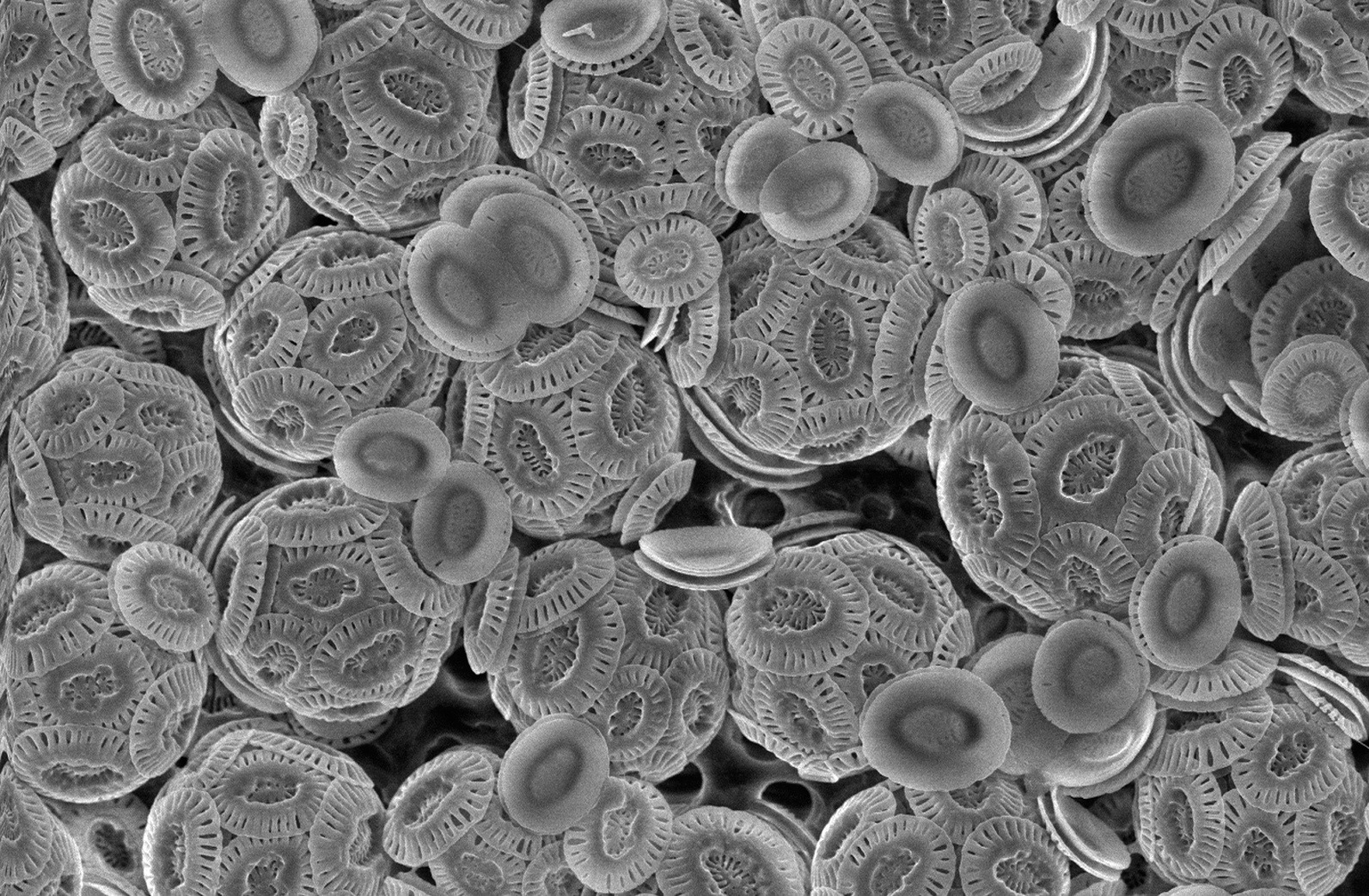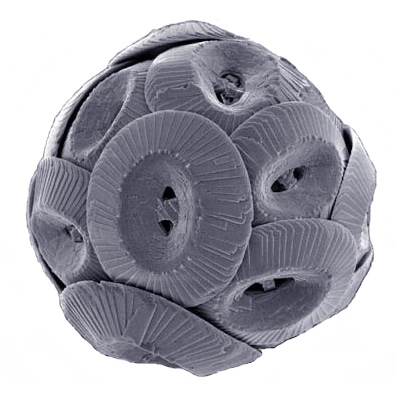|
Braarudosphaera Bigelowii
''Braarudosphaera bigelowii'' is a coastal coccolithophore in the fossil record going back 100 million years. The family Braarudosphaeraceae are single-celled coastal phytoplanktonic algae with calcareous scales with five-fold symmetry, called pentaliths. With 12 sides, it has a Regular dodecahedron, regular dodecahedral structure, approximately 10 micrometers across.Hagino, K., Onuma, R., Kawachi, M. and Horiguchi, T. (2013) "Discovery of an endosymbiotic nitrogen-fixing cyanobacterium UCYN-A in ''Braarudosphaera bigelowii'' (Prymnesiophyceae)". ''PLoS One'', 8(12): e81749. . The genus name of ''Braarudosphaera'' is in honour of Trygve Braarud (1903–1985), who was a Norwegian botanist. He specialized in marine biology, and was affiliated with the University of Oslo. References Haptophyte species {{Haptophyte-stub ... [...More Info...] [...Related Items...] OR: [Wikipedia] [Google] [Baidu] |
Eukaryota
Eukaryotes () are organisms whose Cell (biology), cells have a cell nucleus, nucleus. All animals, plants, fungi, and many unicellular organisms, are Eukaryotes. They belong to the group of organisms Eukaryota or Eukarya, which is one of the Three-domain system, three domains of life. Bacteria and Archaea (both prokaryotes) make up the other two domains. The eukaryotes are usually now regarded as having emerged in the Archaea or as a sister of the Asgard (archaea), Asgard archaea. This implies that there are only Two-domain system, two domains of life, Bacteria and Archaea, with eukaryotes incorporated among archaea. Eukaryotes represent a small minority of the number of organisms, but, due to their generally much larger size, their collective global biomass (ecology), biomass is estimated to be about equal to that of prokaryotes. Eukaryotes emerged approximately 2.3–1.8 billion years ago, during the Proterozoic eon, likely as Flagellated cell, flagellated phagotrophs. The ... [...More Info...] [...Related Items...] OR: [Wikipedia] [Google] [Baidu] |
Haptophyta
The haptophytes, classified either as the Haptophyta, Haptophytina or Prymnesiophyta (named for ''Prymnesium''), are a clade of algae. The names Haptophyceae or Prymnesiophyceae are sometimes used instead. This ending implies classification at the class rank rather than as a division. Although the phylogenetics of this group has become much better understood in recent years, there remains some dispute over which rank is most appropriate. Characteristics The chloroplasts are pigmented similarly to those of the heterokonts, but the structure of the rest of the cell is different, so it may be that they are a separate line whose chloroplasts are derived from similar red algal endosymbionts. The cells typically have two slightly unequal flagella, both of which are smooth, and a unique organelle called a ''haptonema'', which is superficially similar to a flagellum but differs in the arrangement of microtubules and in its use. The name comes from the Greek ''hapsis'', touch, and ''n ... [...More Info...] [...Related Items...] OR: [Wikipedia] [Google] [Baidu] |
Prymnesiophyceae
Prymnesiophyceae is a haptophyte class. Although it was originally described by Casper in 1972, it did not receive a Latin diagnosis (a requirement for valid publication under the International Code of Botanical Nomenclature The ''International Code of Nomenclature for algae, fungi, and plants'' (ICN) is the set of rules and recommendations dealing with the formal botanical names that are given to plants, fungi and a few other groups of organisms, all those "trad ...) until Hibberd provided one in 1976. References Haptophytes Bikont classes {{Haptophyte-stub ... [...More Info...] [...Related Items...] OR: [Wikipedia] [Google] [Baidu] |
Coccolithophore
Coccolithophores, or coccolithophorids, are single celled organisms which are part of the phytoplankton, the autotrophic (self-feeding) component of the plankton community. They form a group of about 200 species, and belong either to the kingdom Protista, according to Robert Whittaker's Five kingdom classification, or clade Hacrobia, according to a newer biological classification system. Within the Hacrobia, the coccolithophores are in the phylum or division Haptophyta, class Prymnesiophyceae (or Coccolithophyceae). Coccolithophores are almost exclusively marine, are photosynthetic, and exist in large numbers throughout the sunlight zone of the ocean. Coccolithophores are the most productive calcifying organisms on the planet, covering themselves with a calcium carbonate shell called a ''coccosphere''. However, the reasons they calcify remains elusive. One key function may be that the coccosphere offers protection against microzooplankton predation, which is one of the ma ... [...More Info...] [...Related Items...] OR: [Wikipedia] [Google] [Baidu] |
Calcareous
Calcareous () is an adjective meaning "mostly or partly composed of calcium carbonate", in other words, containing lime or being chalky. The term is used in a wide variety of scientific disciplines. In zoology ''Calcareous'' is used as an adjectival term applied to anatomical structures which are made primarily of calcium carbonate, in animals such as gastropods, i.e., snails, specifically about such structures as the operculum, the clausilium, and the love dart. The term also applies to the calcium carbonate tests of often more or less microscopic Foraminifera. Not all tests are calcareous; diatoms and radiolaria have siliceous tests. The molluscs are calcareous, as are calcareous sponges ( Porifera), that have spicules which are made of calcium carbonate. In botany ''Calcareous grassland'' is a form of grassland characteristic of soils containing much calcium carbonate from underlying chalk or limestone rock. In medicine The term is used in pathology, for example i ... [...More Info...] [...Related Items...] OR: [Wikipedia] [Google] [Baidu] |
Pentalith
Coccoliths are individual plates or scales of calcium carbonate formed by coccolithophores (single-celled phytoplankton such as ''Emiliania huxleyi'') and cover the cell surface arranged in the form of a spherical shell, called a ''coccosphere''. Overview Coccolithophores are spherical cells about 5–100 micrometres across, enclosed by calcareous plates called coccoliths, which are about 2–25 micrometres across. Coccolithophores are an important group of about 200 marine phytoplankton species which cover themselves with a calcium carbonate shell called a "coccosphere". They are ecologically and biogeochemically important but the reason why they calcify remains elusive. One key function may be that the coccosphere offers protection against microzooplankton predation, which is one of the main causes of phytoplankton death in the ocean. Material was copied from this source, which is available under Creative Commons Attribution 4.0 International License File:Cross section of ... [...More Info...] [...Related Items...] OR: [Wikipedia] [Google] [Baidu] |
Regular Dodecahedron
A regular dodecahedron or pentagonal dodecahedron is a dodecahedron that is regular, which is composed of 12 regular pentagonal faces, three meeting at each vertex. It is one of the five Platonic solids. It has 12 faces, 20 vertices, 30 edges, and 160 diagonals (60 face diagonals, 100 space diagonals). It is represented by the Schläfli symbol . Dimensions If the edge length of a regular dodecahedron is a, the radius of a circumscribed sphere (one that touches the regular dodecahedron at all vertices) is :r_u = a\frac \left(1 + \sqrt\right) \approx 1.401\,258\,538 \cdot a and the radius of an inscribed sphere (tangent to each of the regular dodecahedron's faces) is :r_i = a\frac \sqrt \approx 1.113\,516\,364 \cdot a while the midradius, which touches the middle of each edge, is :r_m = a\frac \left(3 +\sqrt\right) \approx 1.309\,016\,994 \cdot a These quantities may also be expressed as :r_u = a\, \frac \phi :r_i = a\, \frac :r_m = a\, \frac where ''ϕ'' is the golden rat ... [...More Info...] [...Related Items...] OR: [Wikipedia] [Google] [Baidu] |
Braarudosphaera Bigelowii
''Braarudosphaera bigelowii'' is a coastal coccolithophore in the fossil record going back 100 million years. The family Braarudosphaeraceae are single-celled coastal phytoplanktonic algae with calcareous scales with five-fold symmetry, called pentaliths. With 12 sides, it has a Regular dodecahedron, regular dodecahedral structure, approximately 10 micrometers across.Hagino, K., Onuma, R., Kawachi, M. and Horiguchi, T. (2013) "Discovery of an endosymbiotic nitrogen-fixing cyanobacterium UCYN-A in ''Braarudosphaera bigelowii'' (Prymnesiophyceae)". ''PLoS One'', 8(12): e81749. . The genus name of ''Braarudosphaera'' is in honour of Trygve Braarud (1903–1985), who was a Norwegian botanist. He specialized in marine biology, and was affiliated with the University of Oslo. References Haptophyte species {{Haptophyte-stub ... [...More Info...] [...Related Items...] OR: [Wikipedia] [Google] [Baidu] |
Trygve Braarud
Trygve Braarud (15 September 1903 – 9 July 1985) was a Norwegian botanist. He specialized in marine biology, and was affiliated with the University of Oslo for most of his career. Career He was born in Verdal, and had ten older siblings as well as a twin sister. He received some of his early schooling at a private teaching institution founded by his father. He finished his secondary education at Trondheim Cathedral School in 1921, and graduated from the University of Oslo with the cand.real. degree in 1927. In his early career he published the work ''The 'Øst' Expedition to the Denmark Strait 1929'' in two volumes. The first volume, ''Hydrography'', was published together with J. T. Ruud in 1932. The second volume, ''The Phytoplankton and its Conditions of Growth'' came in 1935 and earned Braarud the dr.philos. degree. He had taken up planktology as a research assistant of Haaken Hasberg Gran at the botanical laboratory, a position he held from 1926 to 1933. From 1934 to 1936 ... [...More Info...] [...Related Items...] OR: [Wikipedia] [Google] [Baidu] |





